Crypto investment funds see $435M outflow as bull market stalls amid rising inflation concerns
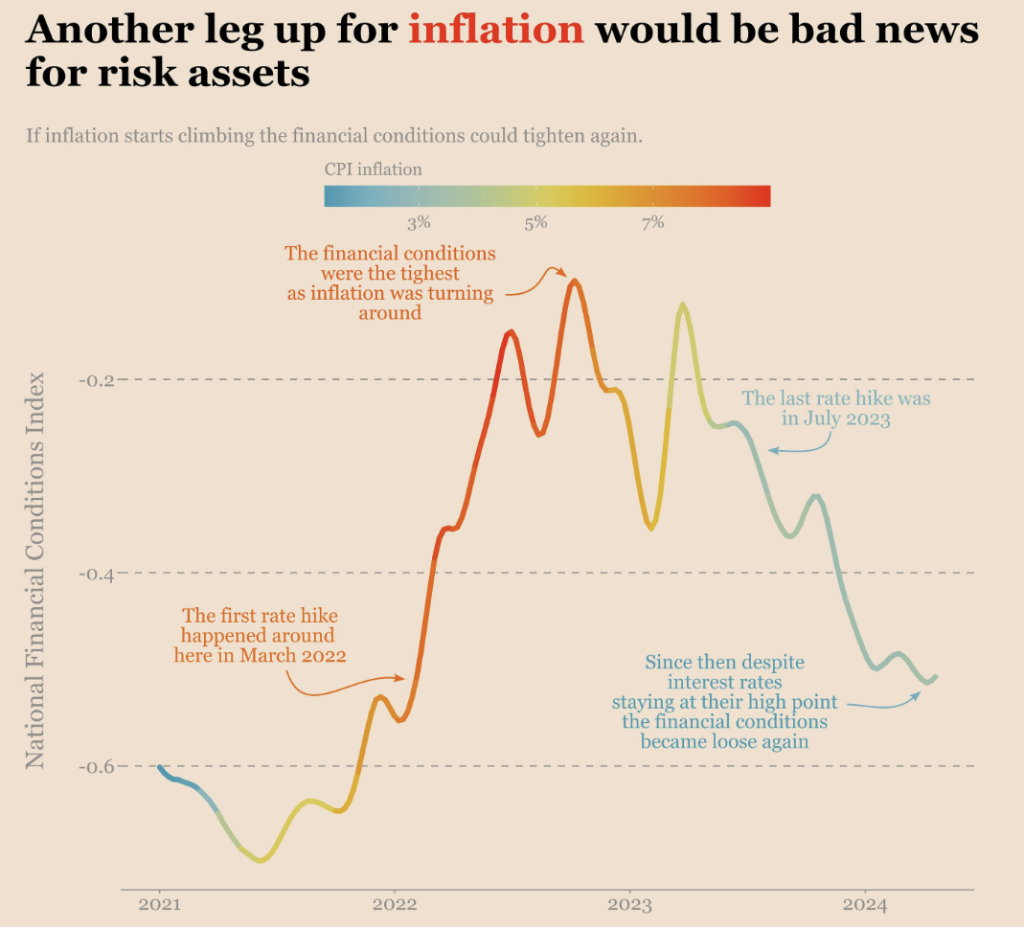
Concerns over rising inflation and flat spot Bitcoin ETF inflows could be factors in the $435 million outflow from crypto investment funds last week.

Reporting from CoinShares highlighted a weekly $435 million outflow from cryptocurrency investment products in the week ending April 26. Crypto exchange-traded products (ETPs) have now experienced outflows for the third consecutive week as Bitcoin price remains rangebound in the low $60,000 range.
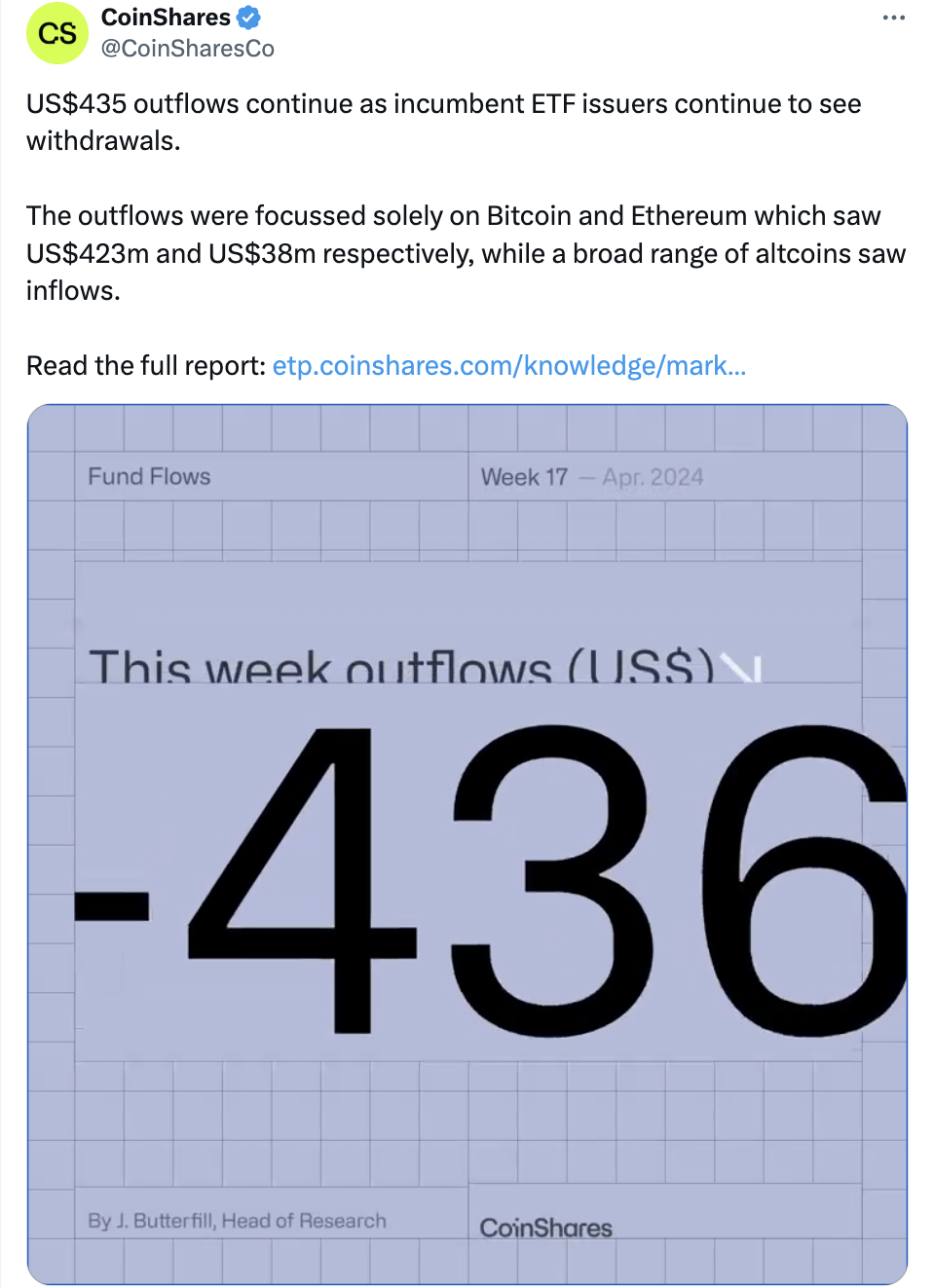
Bitcoin (BTC) funds led outflows, with $423 million exiting the market after the halving event, while Ether (ETH) investment products also experienced withdrawals of $38 million, marking their seventh consecutive week of negative flow. Solana (SOL) and Litecoin (LTC) ETPs experienced deposits, posting net inflows of $4.1 million and $3.1 million, respectively.
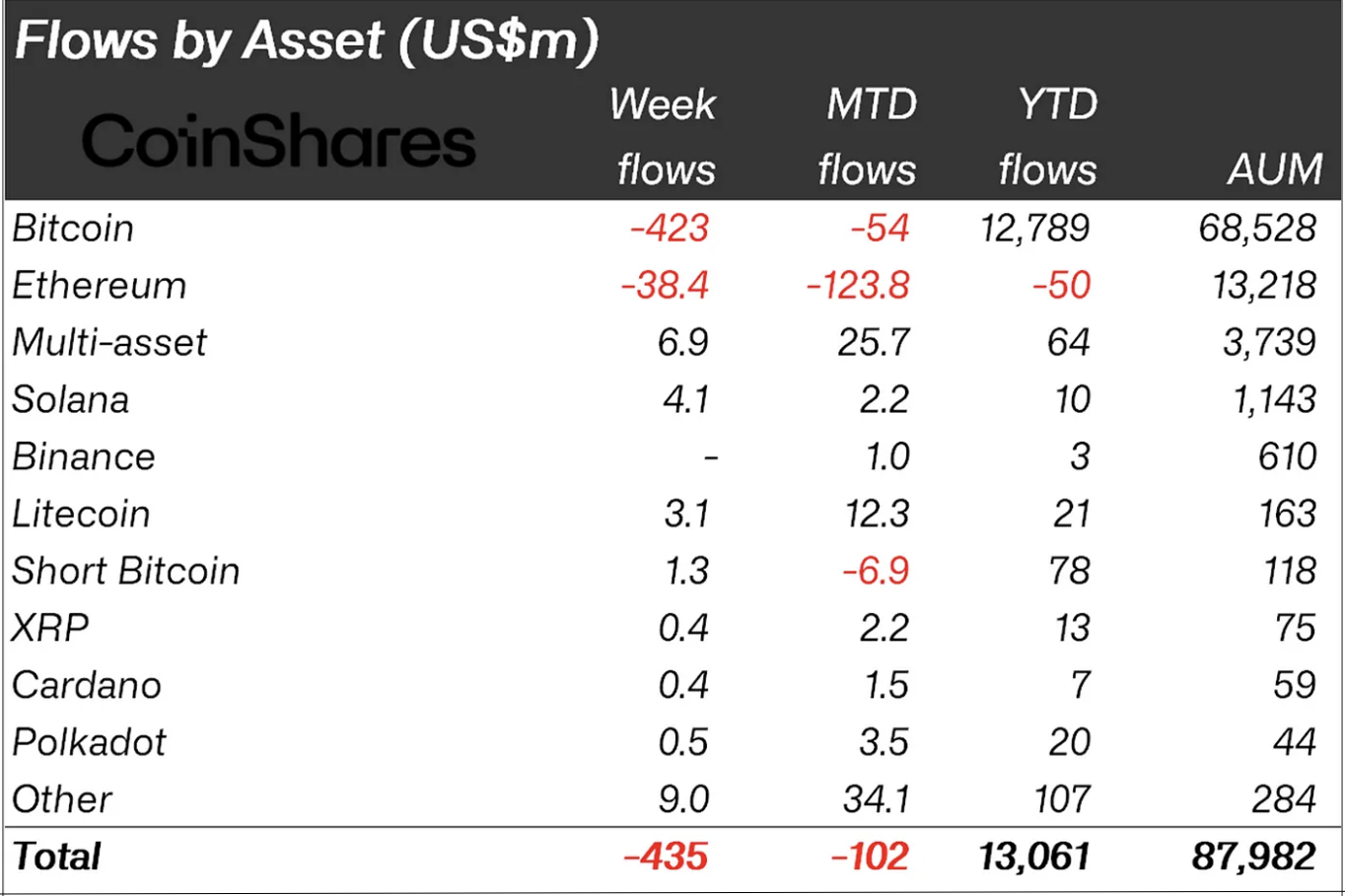
According to CoinShares, the negative outflows are likely due to “deceleration in inflows from new issuers,” which saw only $126 million in inflows last week, compared to $254 million the week prior.
Data from Farside Investors reveals that BlackRock’s Bitcoin ETF, IBIT, recorded “zero flows” for the first time last week. The other issuers have experienced various days of zero inflows over the last few weeks amid decelerating outflows from Grayscale’s GBTC.
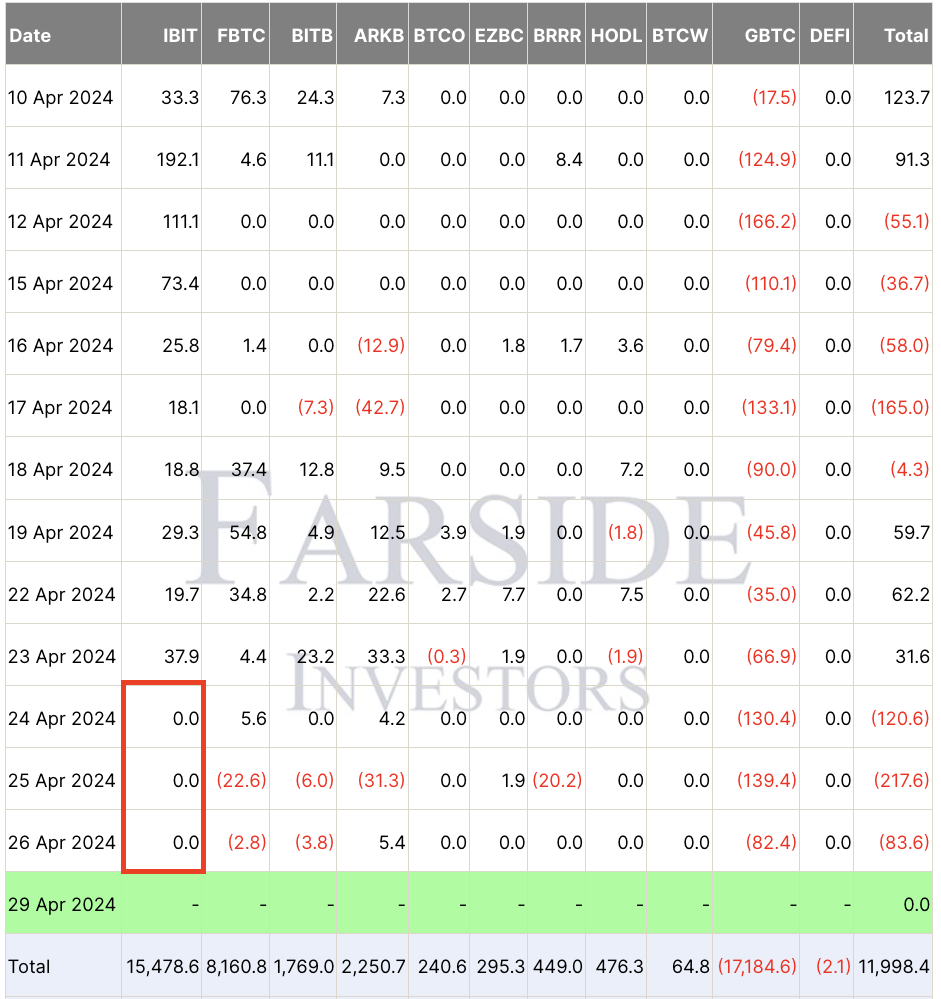
The negative outflows are likely a result of investors’ concerns about U.S. stagflation – a combination of slower economic growth rate and sticky inflation, further weakening the probability of the Fed rate cuts.
According to the CME FedWatch tool, traders are placing the odds of a June rate cut at just 11.3% at the time of writing versus 44.8% for September and 43.8% for November. This means market analysts are betting that the U.S. Federal Reserve will hold rates steady in May and June, with the first possible cut being later in the year.
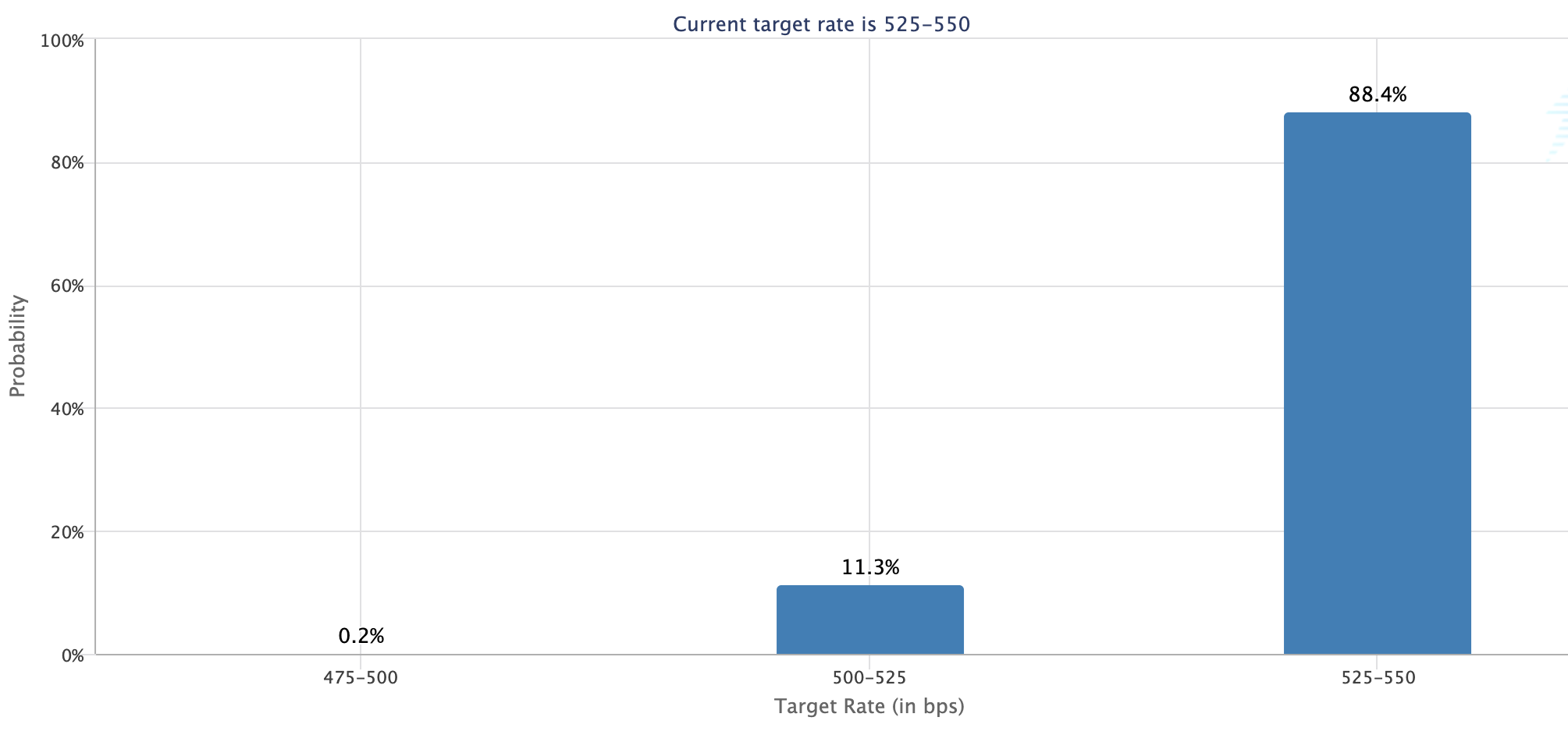
Bitcoin bull run experiencing a “short-term pause”
Analysts at brokerage firm Bernstein say that the slowdown in spot Bitcoin ETF inflows is not the beginning of a negative trend but is a “short-term pause” before BTC resumes its bull run.
In a note to clients, Bernstein analysts Gautam Chhugani and Mahika Sapra wrote in a report,
“We don’t expect the Bitcoin ETF slowdown to be a worrying trend, but believe it is a short-term pause before ETFs become more integrated with private bank platforms, wealth advisers and even more brokerage platforms.”
The analysts emphasized their $150,000 cycle target for the Bitcoin price by the end of 2025, citing “unprecedented ETF demand,” which has seen $12 billion of spot Bitcoin ETF net inflows since their market debut on January 11.
A new report by Ecoinometrics asks its readers to watch out for a pivot in the financial conditions that could “make or break the Bitcoin bull market.”
The report explains that while spot Bitcoin ETFs “opened up a new source of demand,” turning macro winds and the failure of the U.S. Federal Reserve to control inflation could trouble the bull market.
“That could cause a re-tightening of the financial conditions. And this would create a headwind for the bull market.”
According to Ecoinometrics, the Federal Reserve Bank of Chicago’s National Financial Conditions Index (NFCI), which measures the level of tightness in the U.S. financial system, is stalling and is at the same level it was in 2022 when the rates started hiking.
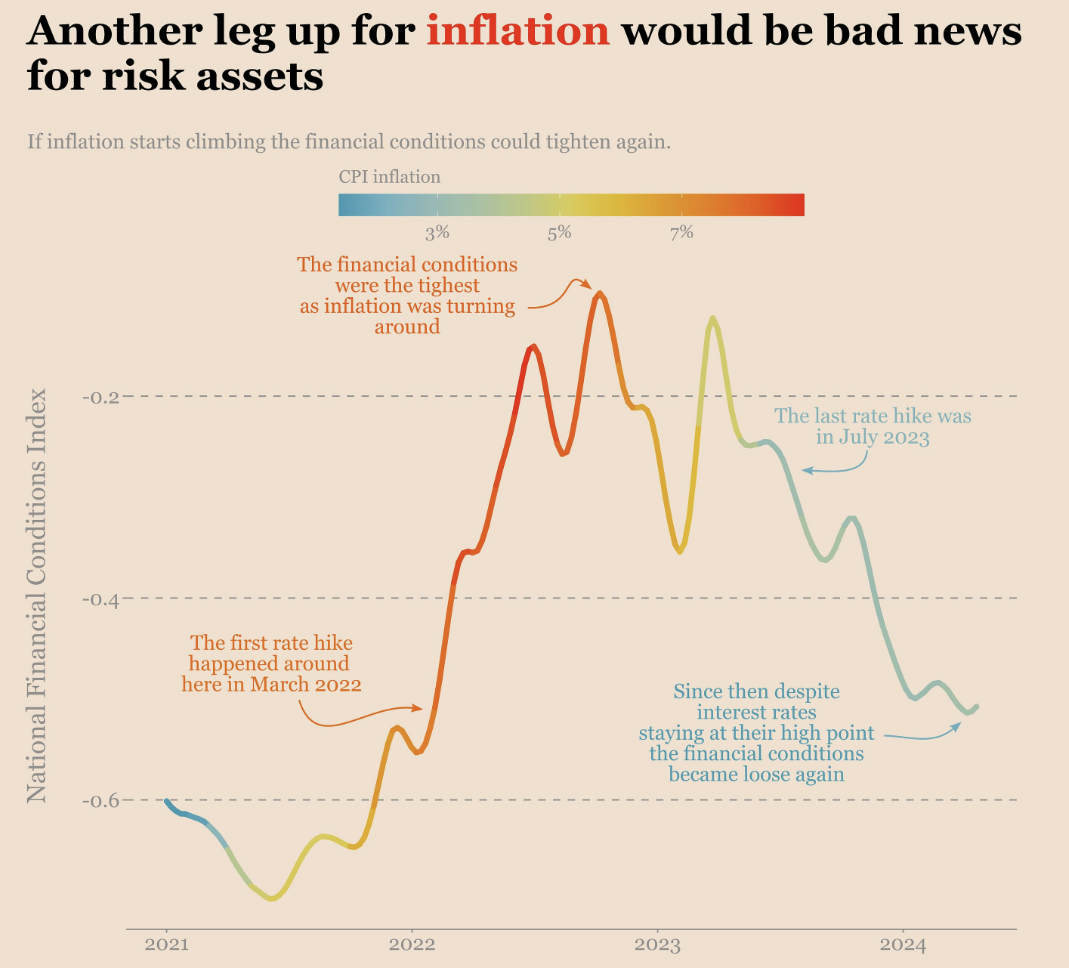
As the chart above reveals, the NFCI is stalling, which is a possible explanation for why risk assets, such as Bitcoin, are bearish, Econometrics explained.
“If it just stays at that, then we are simply experiencing a pause in the bull market. But if this is a pivot in the financial conditions, the bull market would be in trouble.”
“There is a potential positive catalyst next week as the HK BTC and ETH spot ETFs begin trading. Interest is growing in what could be a gateway for the inflow of Asian institutional capital,” QCP wrote in a note over the weekend.


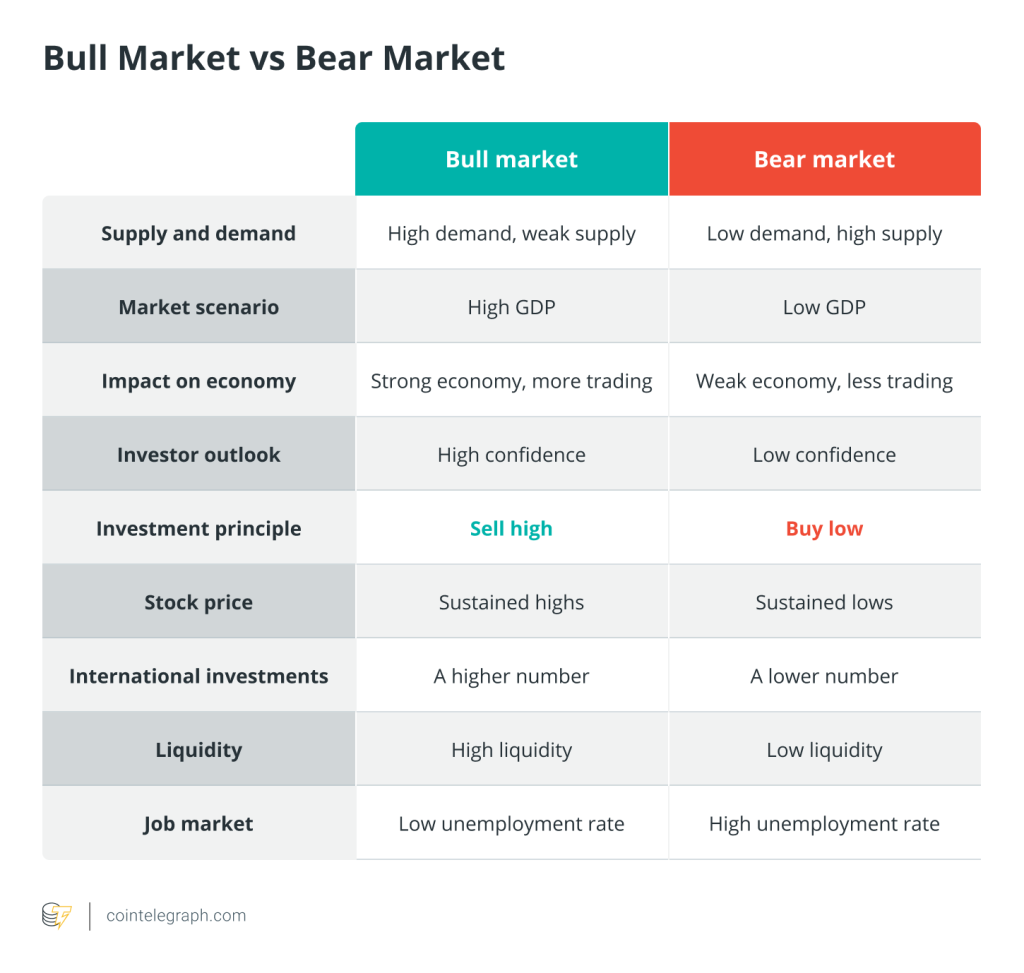


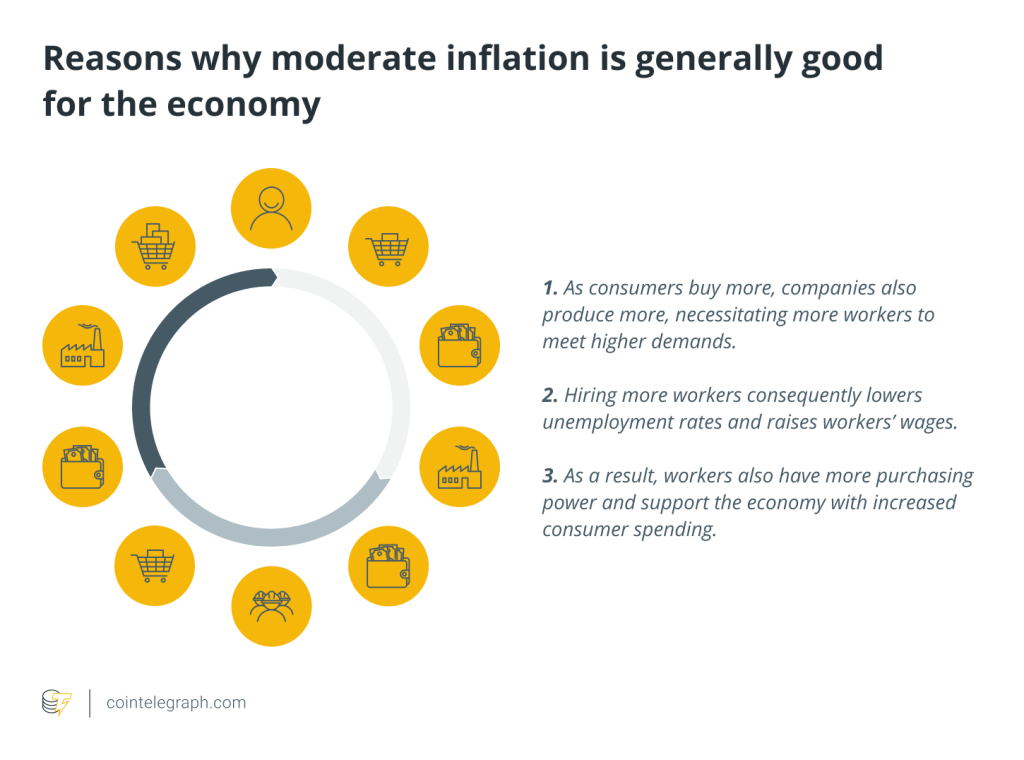
Responses